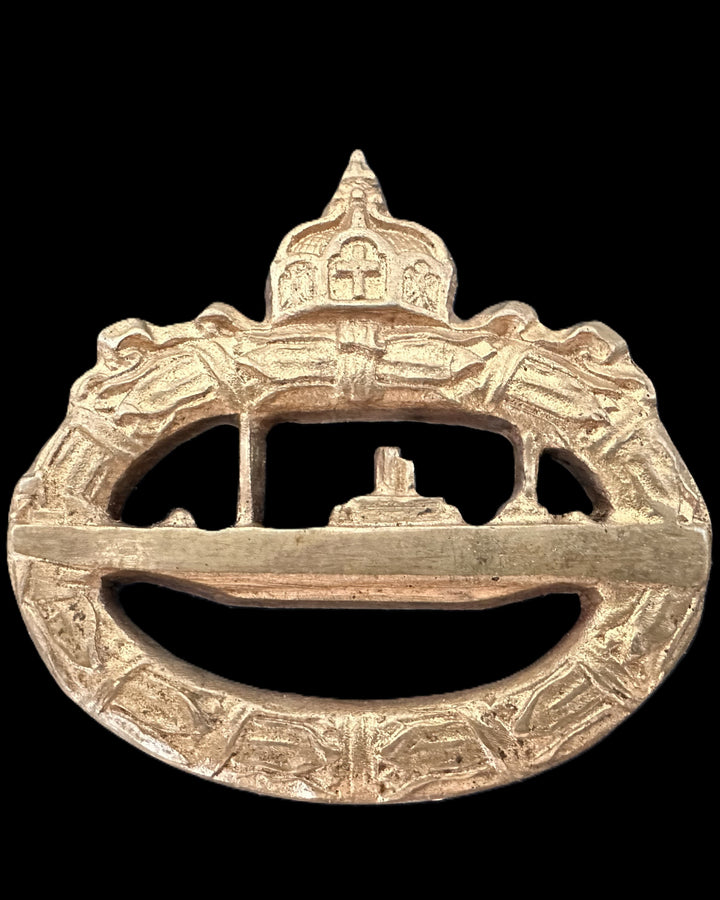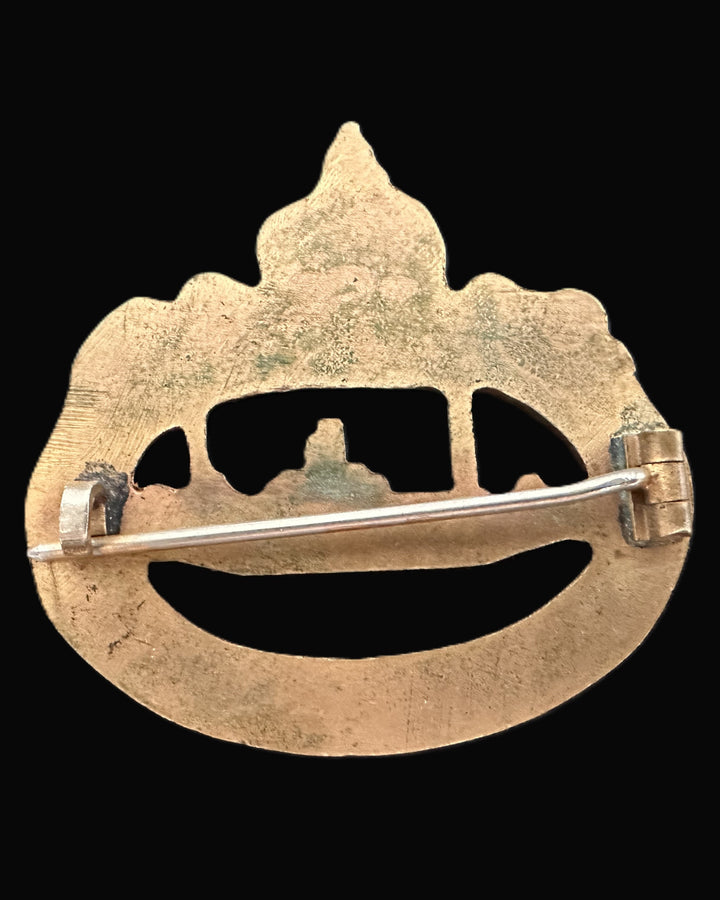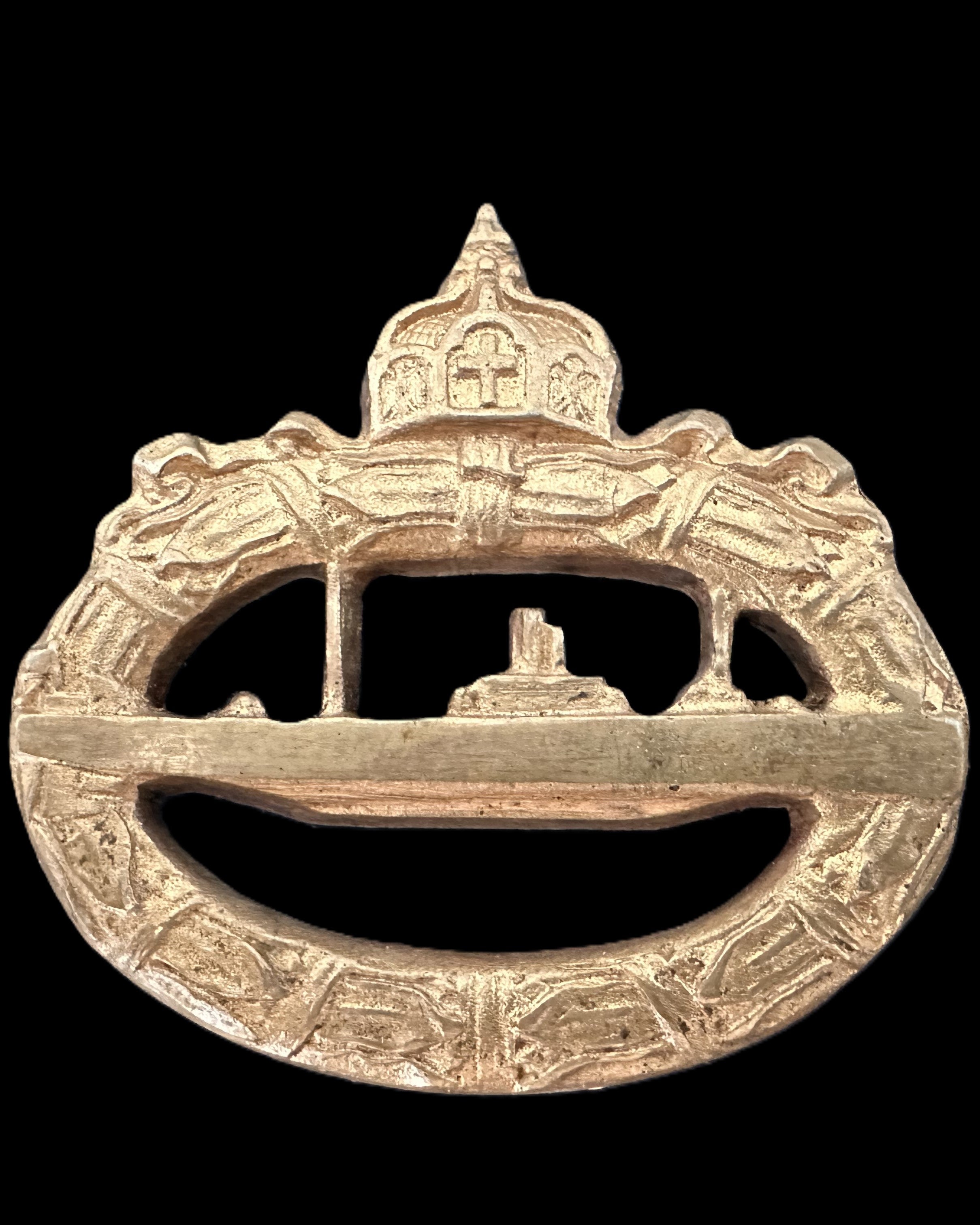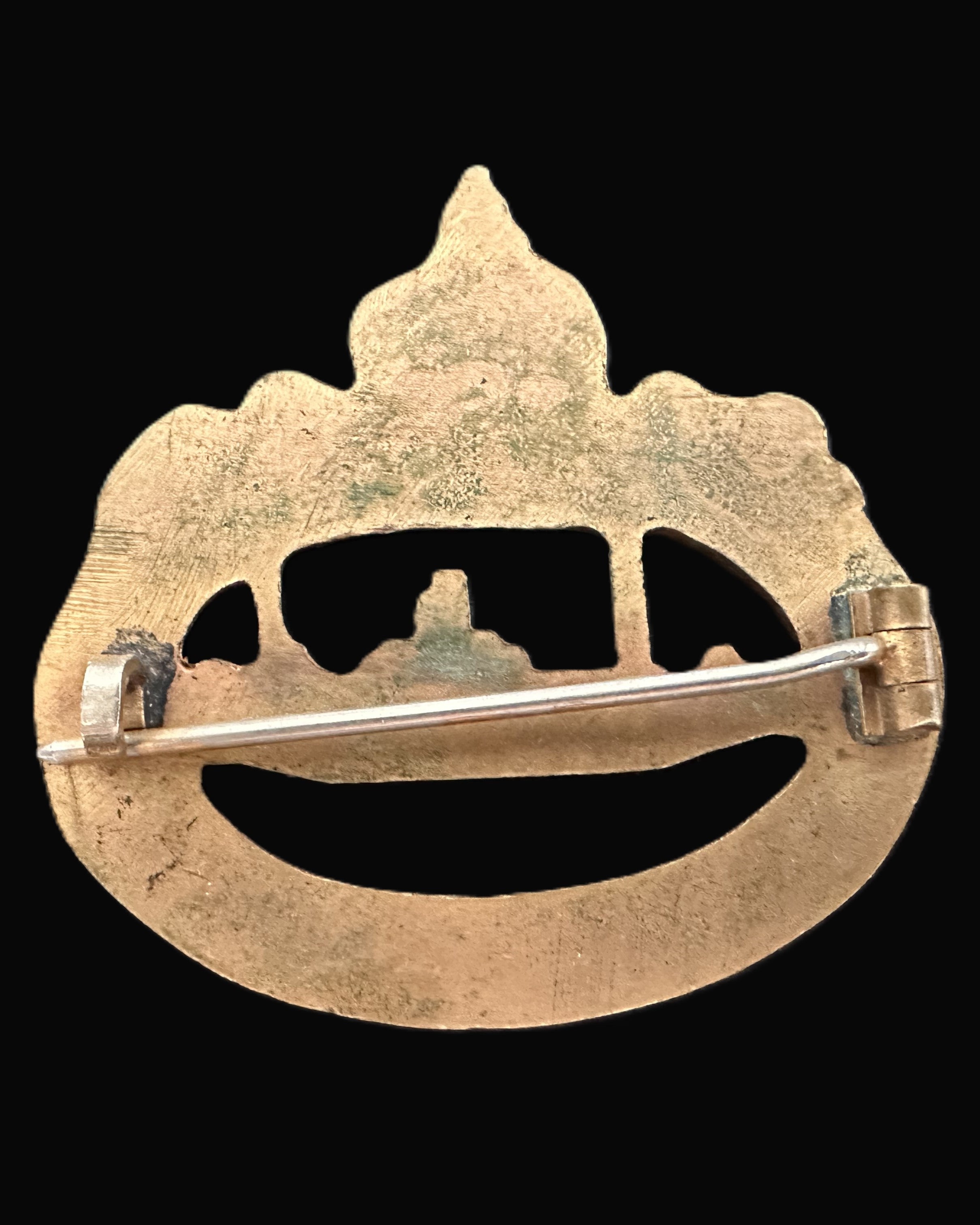Imperial German U-Boat Badge – World War I Kriegsmarine Award
- Regular price
- $349.00
- Sale price
- $349.00
- Regular price
SKU: 01-13
This is a highly desirable Imperial German U-Boat Badge (U-Boots-Kriegsabzeichen), awarded to crew members of the Kaiserliche Marine’s U-boat fleet during World War I. Instituted in 1918, this badge was given to submarine officers, NCOs, and enlisted crewmen who successfully completed a specific number of war patrols or distinguished themselves in combat.
Design & Features:
- The central focus of this badge is a finely detailed Imperial German U-boat, positioned between two cutouts, giving the piece a distinct and openwork appearance.
- It is framed by an ornate laurel wreath, symbolizing valor and honor in Imperial Germany.
- A prominent Imperial German Crown (Kaiserkrone) sits atop the badge, reinforcing its elite status.
- The reverse features a pin-back fastening, consisting of a period-correct hinge and catch, indicative of wartime production.
- Constructed of gilded brass or tombak, a material commonly used in high-ranking naval awards.
Historical Context:
The German U-boat campaign was one of the most formidable threats to Allied naval operations during World War I. With their ability to strike stealthily, U-boats were instrumental in blockades, commerce raiding, and disrupting enemy supply lines. As a result, Germany honored its elite submarine crews with this distinguished badge, recognizing their daring and skill in combat.
Condition:
- Front: Displays honest wear with age-appropriate patina, maintaining fine detailing on the U-boat, crown, and wreath.
- Reverse: Shows expected wear with an intact period pin-back mechanism, though oxidation is present.
- Overall: A solid wartime example, with original gilding partially retained.
Collectibility & Rarity:
This Imperial German U-Boat Badge is a must-have for serious collectors of naval and military awards. Due to the high attrition rate of U-boat crews, these badges were not widely issued, making surviving examples exceptionally scarce. Additionally, given the short period of official issuance (1918), original pieces are far rarer than many World War II-era counterparts.
Display & Provenance:
This badge is perfect for display in a naval or aviation collection, given its historical importance and eye-catching design. Whether framed alongside period documents or worn on a tunic for reenactment purposes, it remains a testament to the bravery of Germany’s U-boat corps.
Helpful Tips: Verifying Authenticity for Collectors
Ensuring the authenticity of historical militaria is crucial for collectors. Here are key factors to consider when verifying an item's legitimacy:
-
Material & Construction – Examine the materials used. Authentic period items typically feature era-specific metals, fabrics, and craftsmanship techniques.
-
Markings & Stamps – Look for period-appropriate maker’s marks, unit stamps, or government-issued hallmarks. These can often confirm an item’s provenance.
-
Aging & Patina – Genuine artifacts will show consistent aging, including oxidation, natural wear, and period-correct patina. Be cautious of artificially aged reproductions.
-
Provenance & Documentation – Items with a verifiable history or accompanying documents, such as letters, award citations, or period photographs, provide an added layer of authenticity.
-
Signatures & Handwriting – If the item includes a signature or inscription, compare it to verified examples from historical archives, paying attention to pen pressure, ink flow, and writing style.
-
Construction Techniques – Period-correct methods of attachment, such as pinbacks, rivets, and stitching, should align with known examples from the era.
-
Expert Authentication – Consulting a reputable expert or reference book on the specific type of artifact can help confirm originality. Collectors should also compare the item with museum-held examples or well-documented pieces from reputable dealers.
By following these guidelines, collectors can confidently assess the authenticity of their acquisitions and ensure they are investing in genuine historical artifacts.





